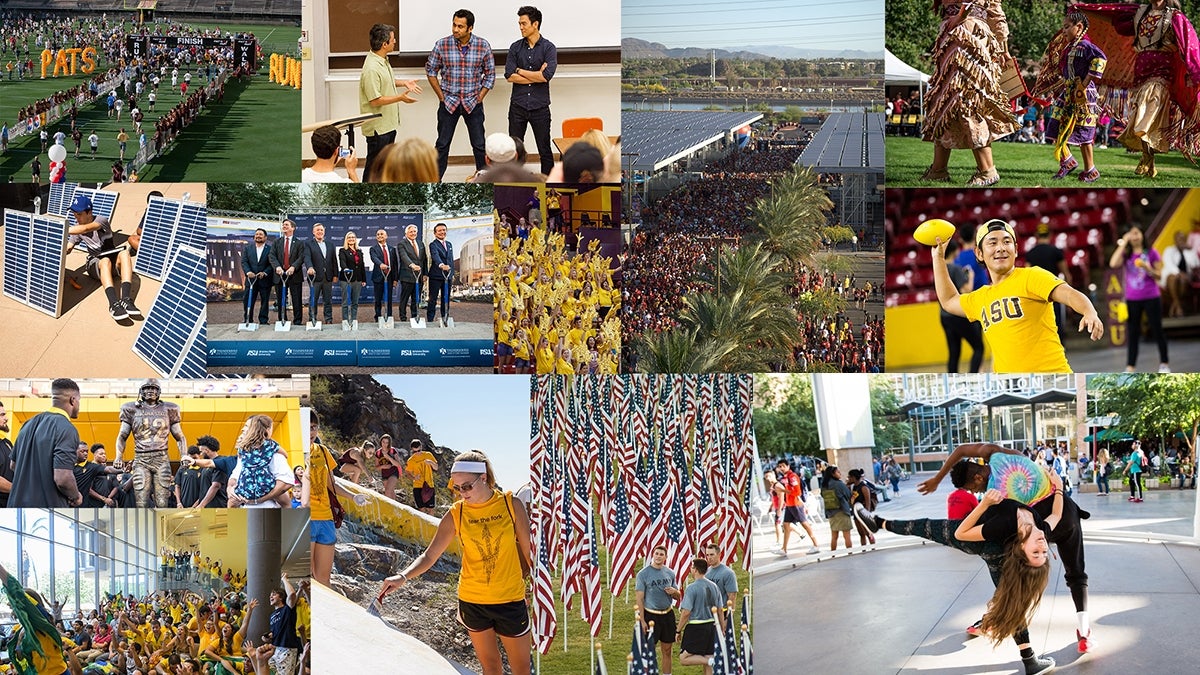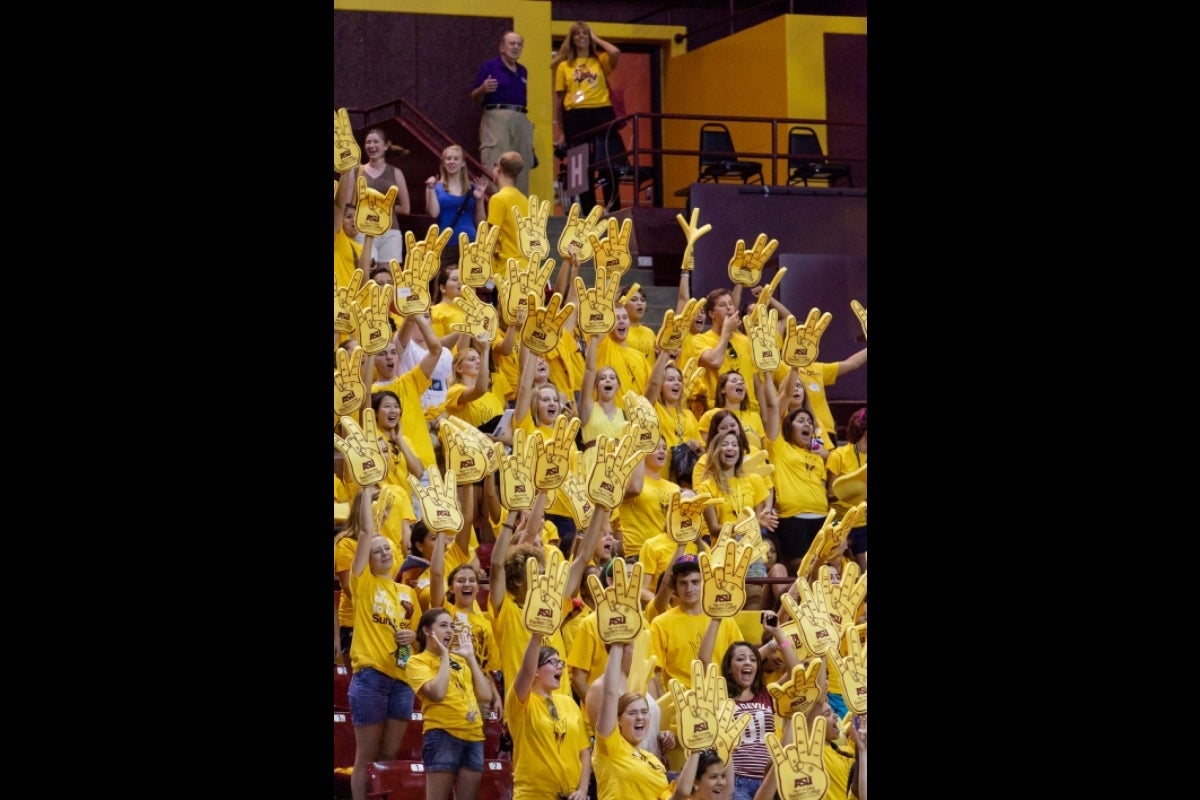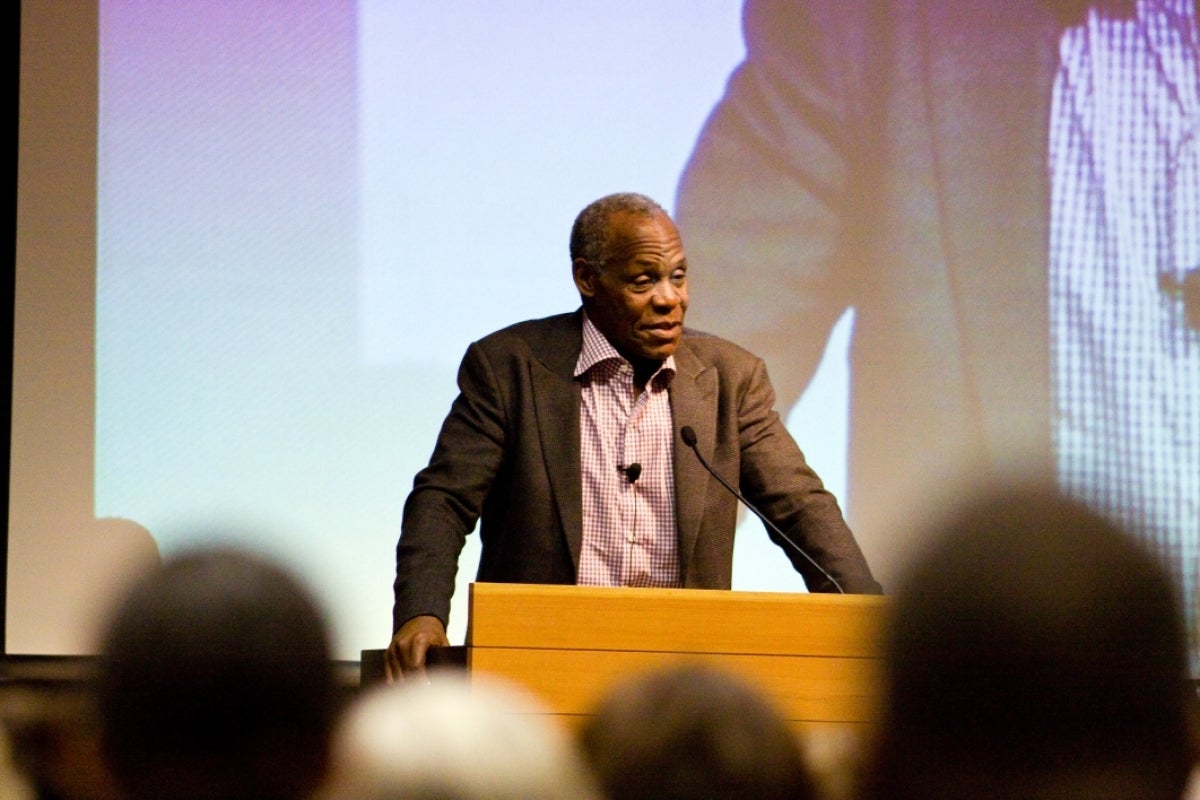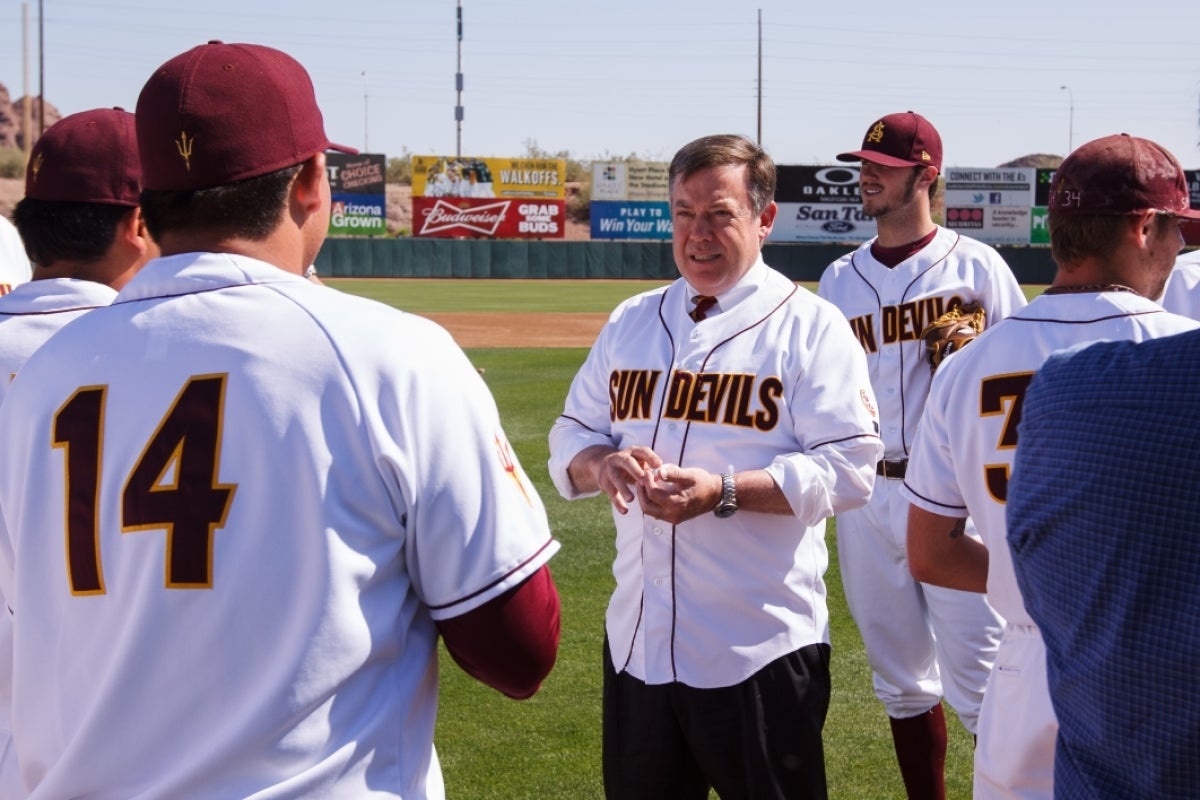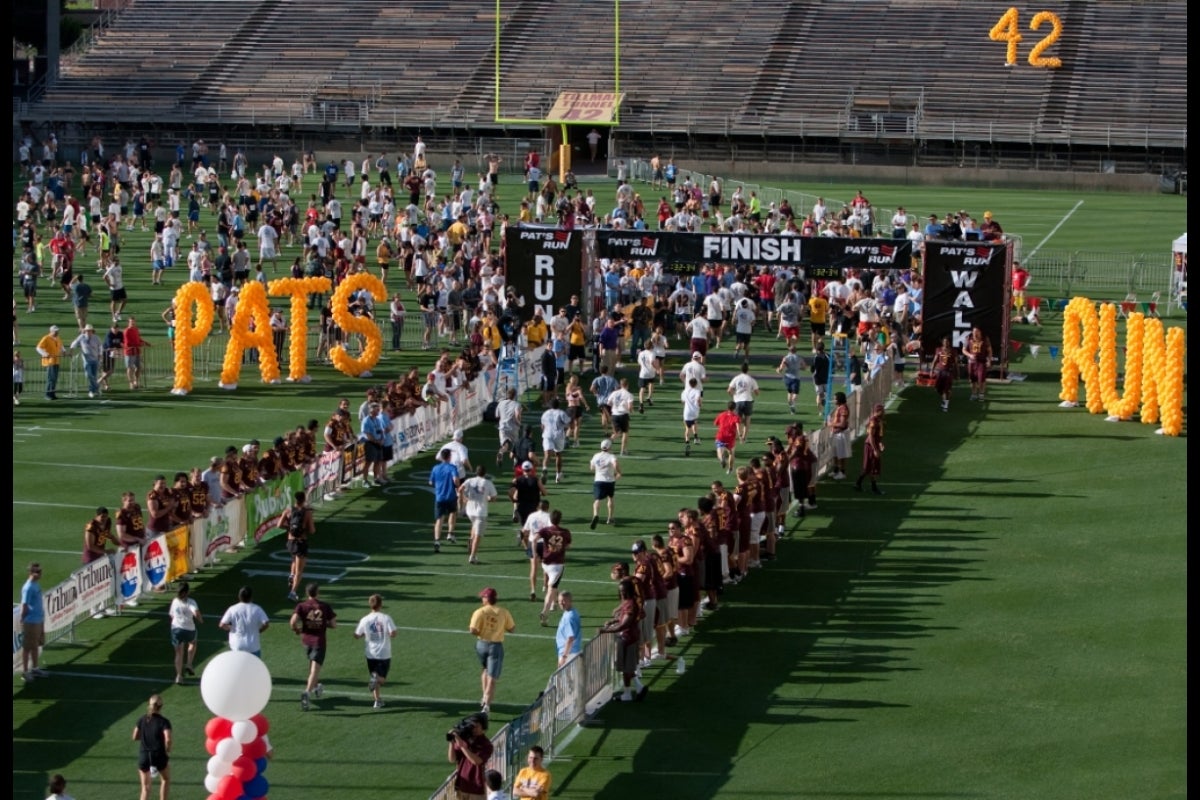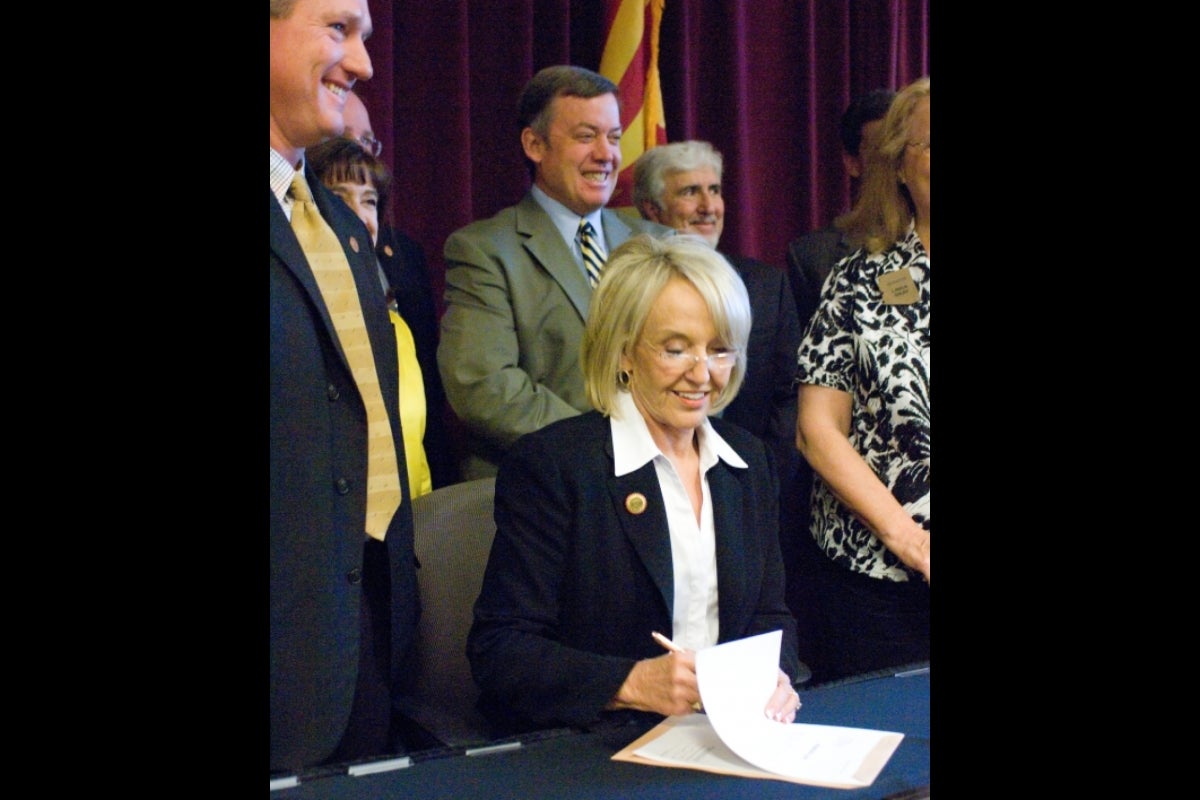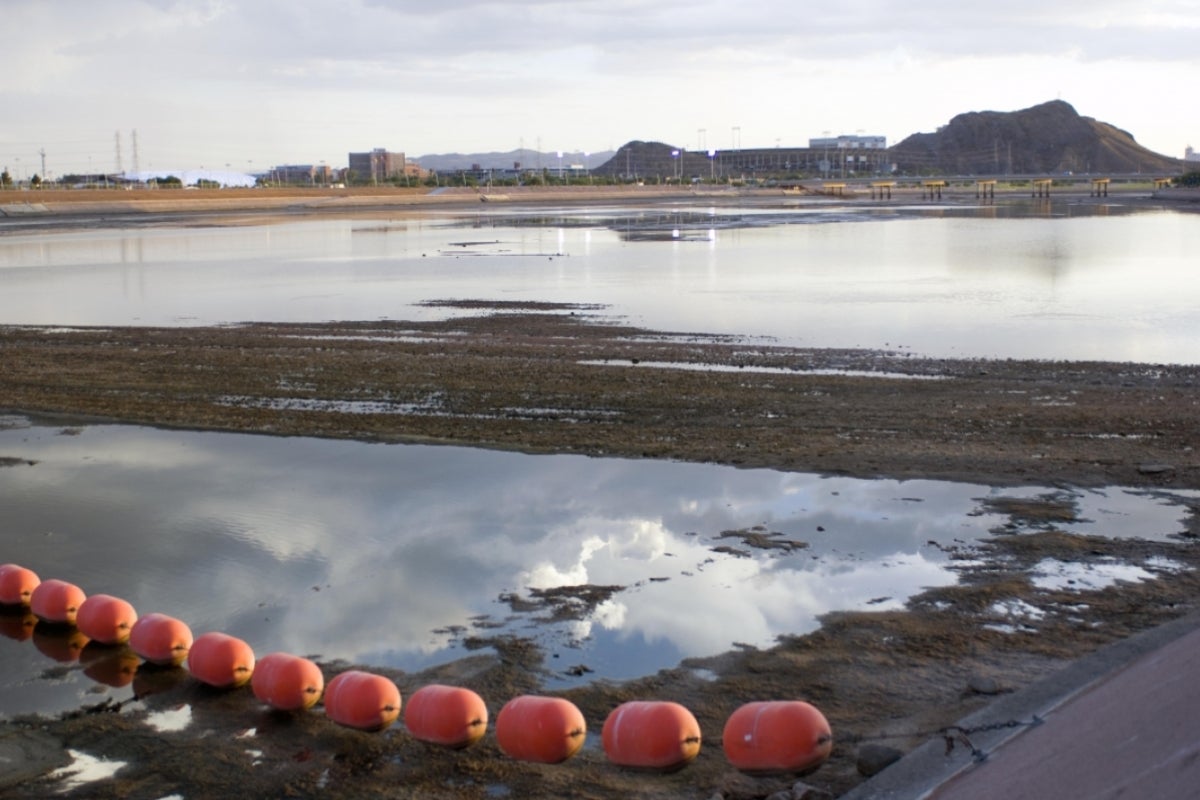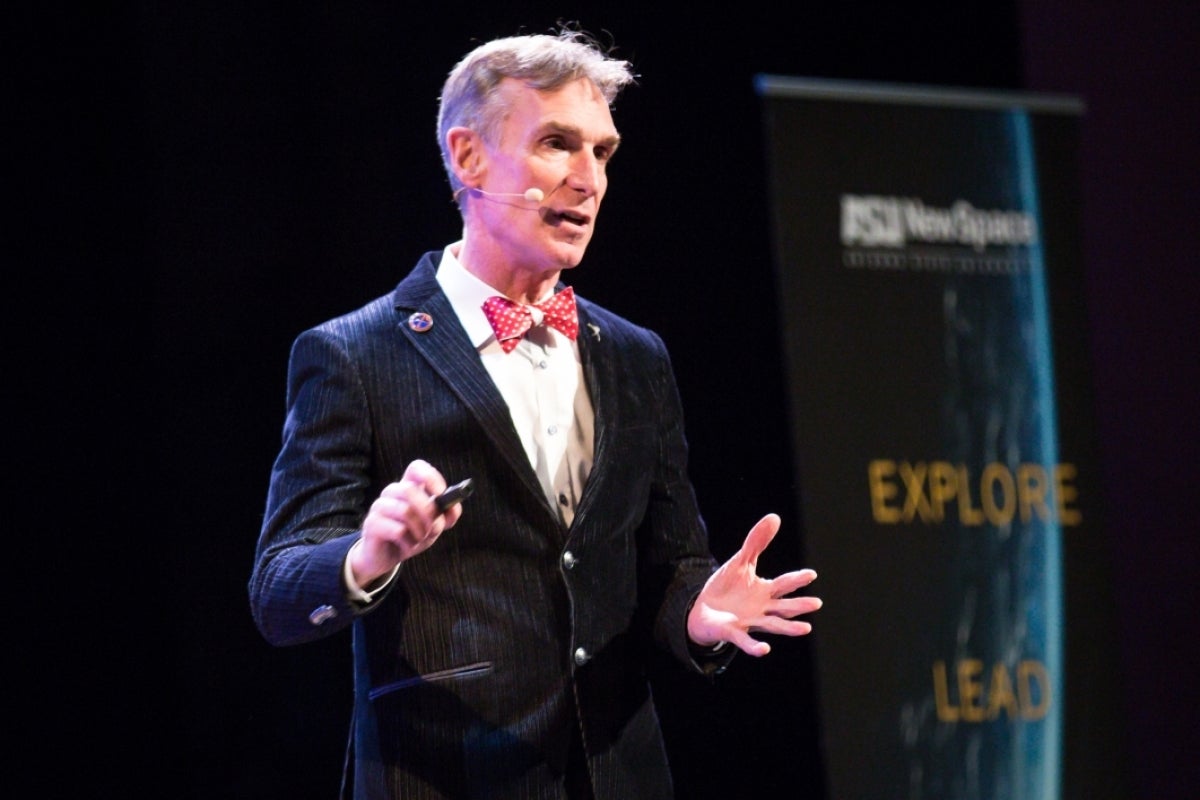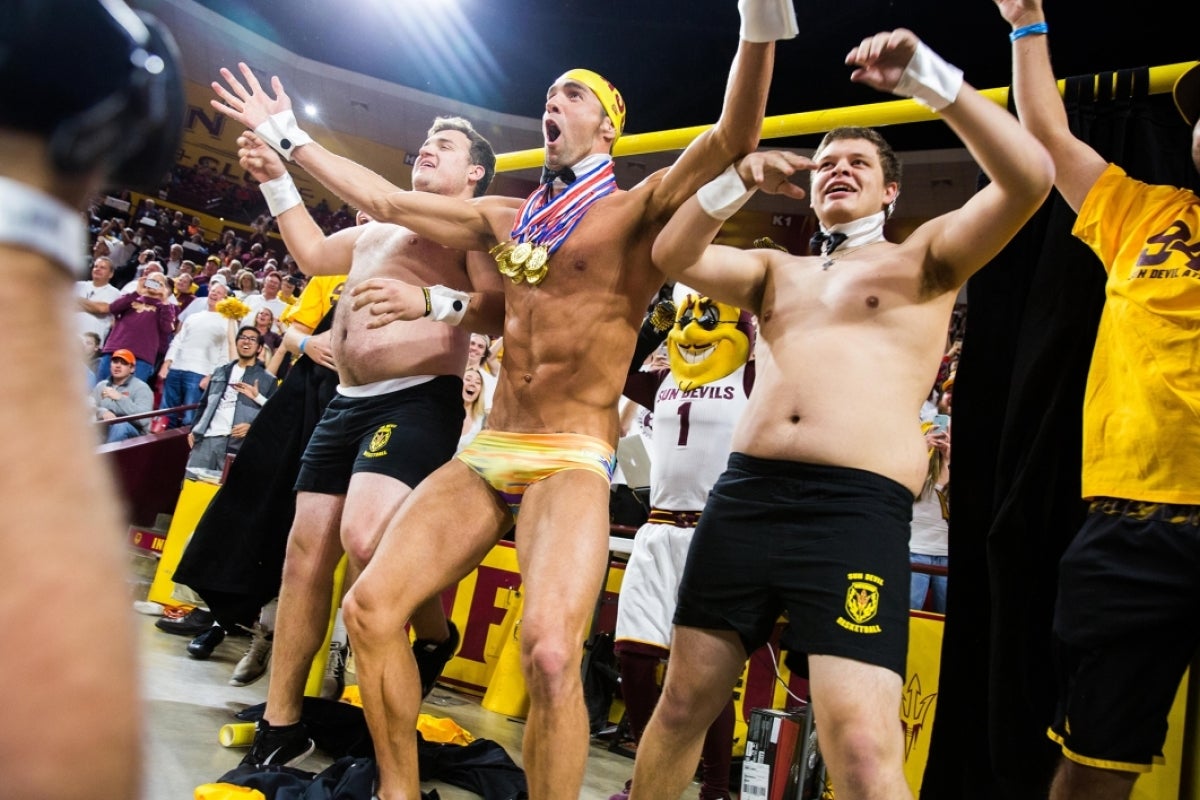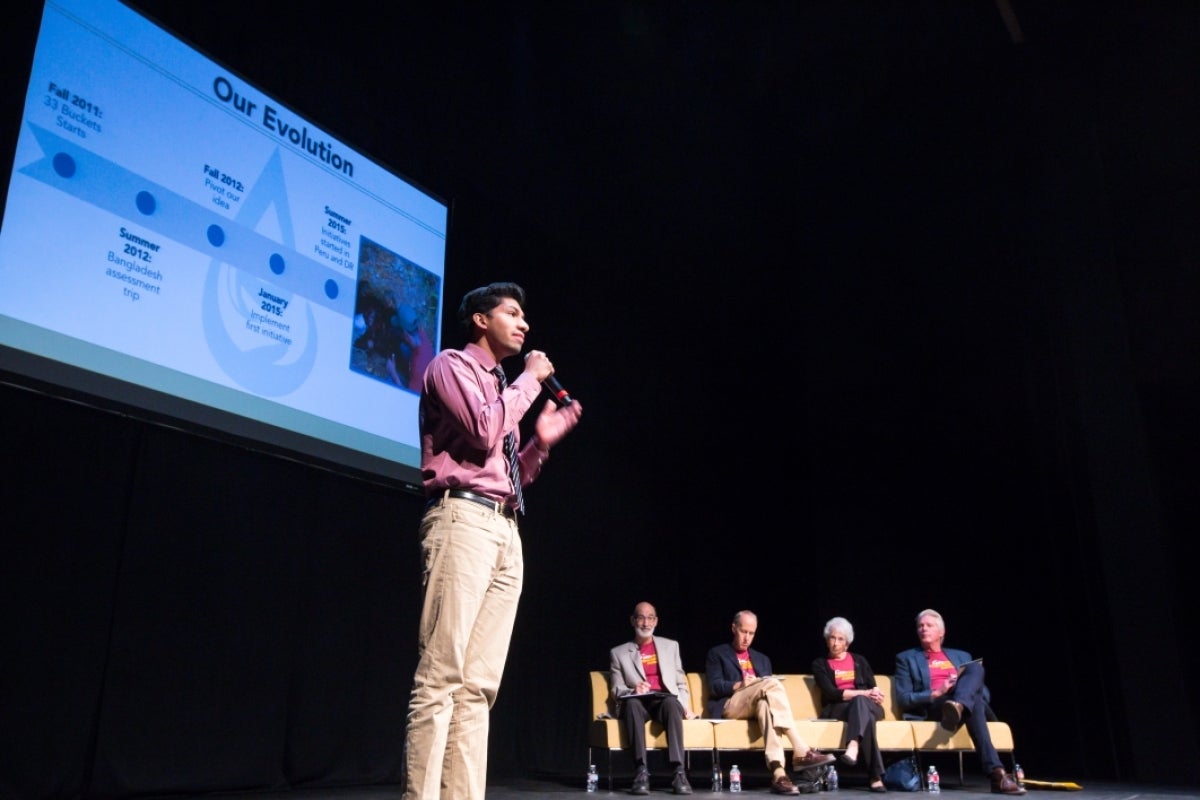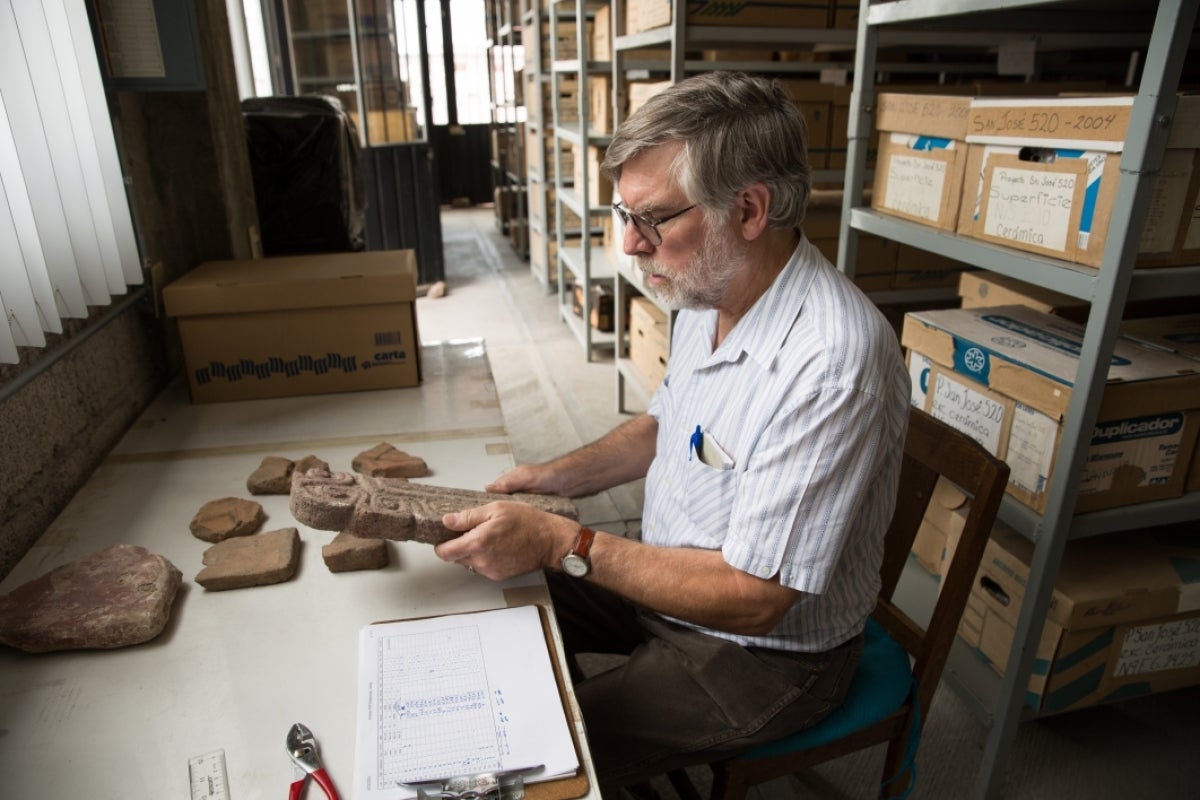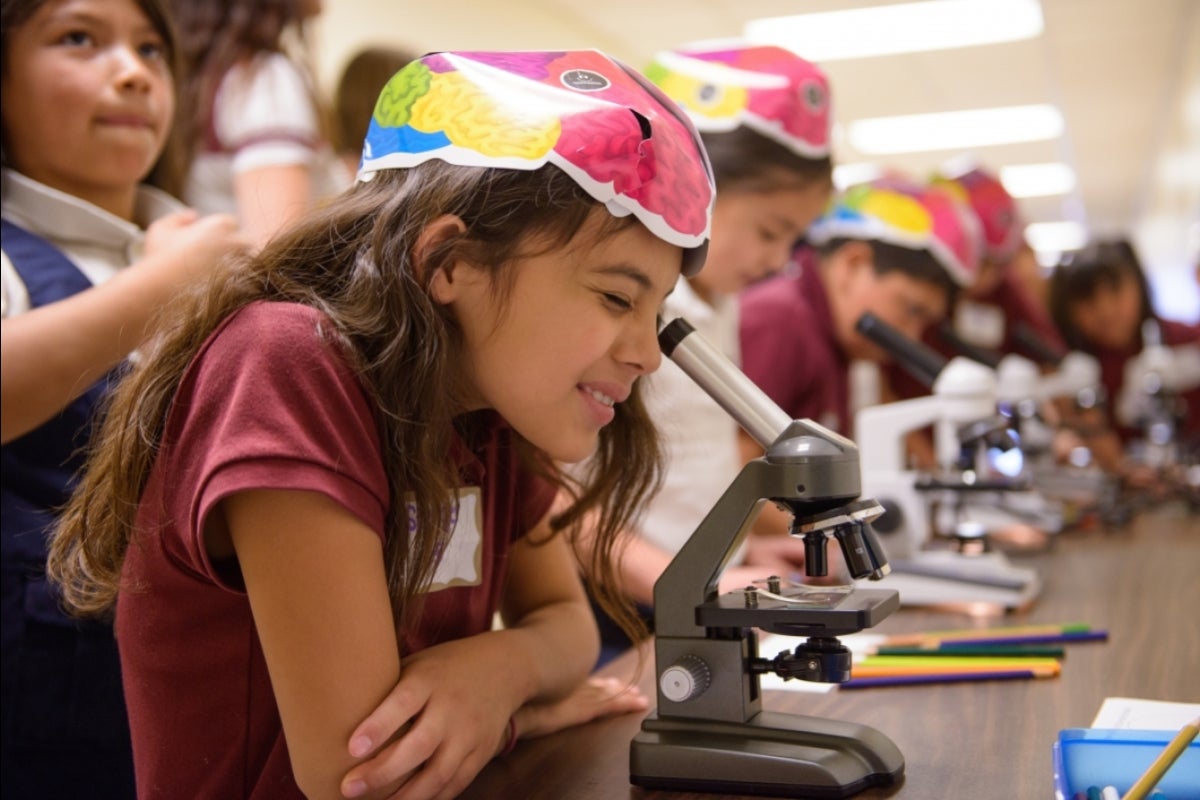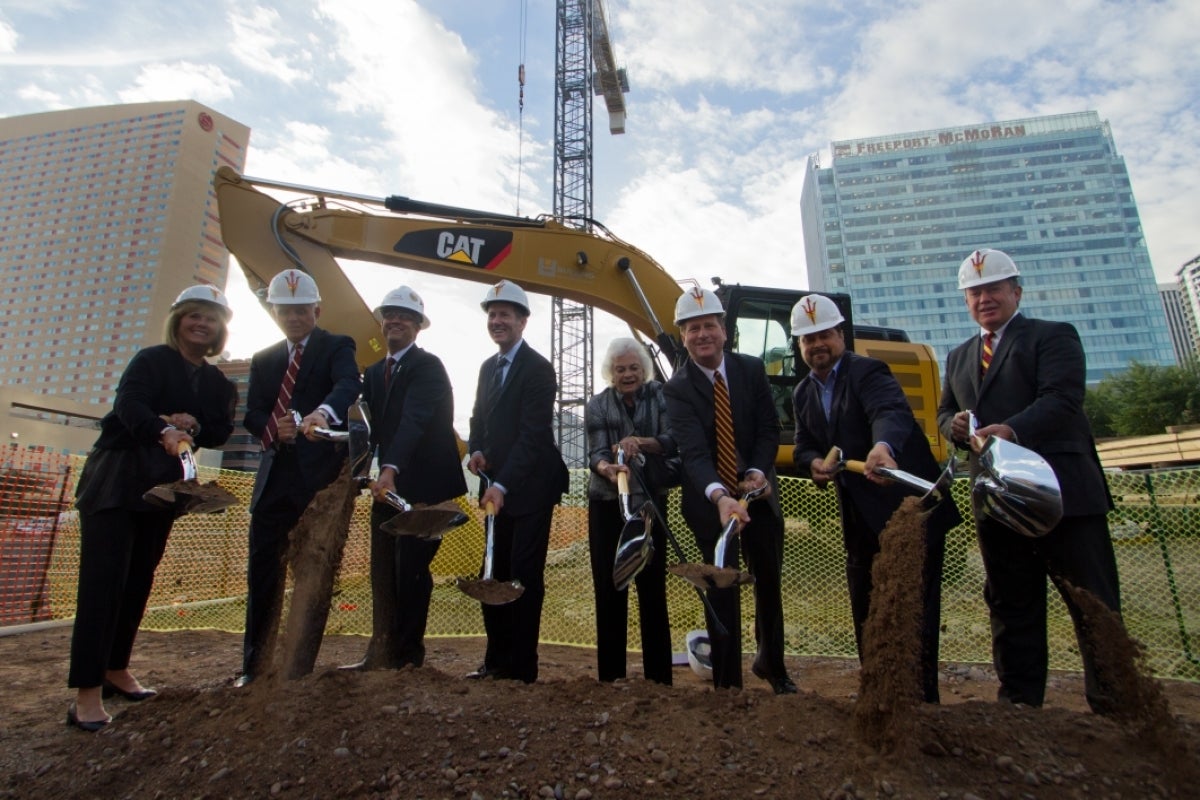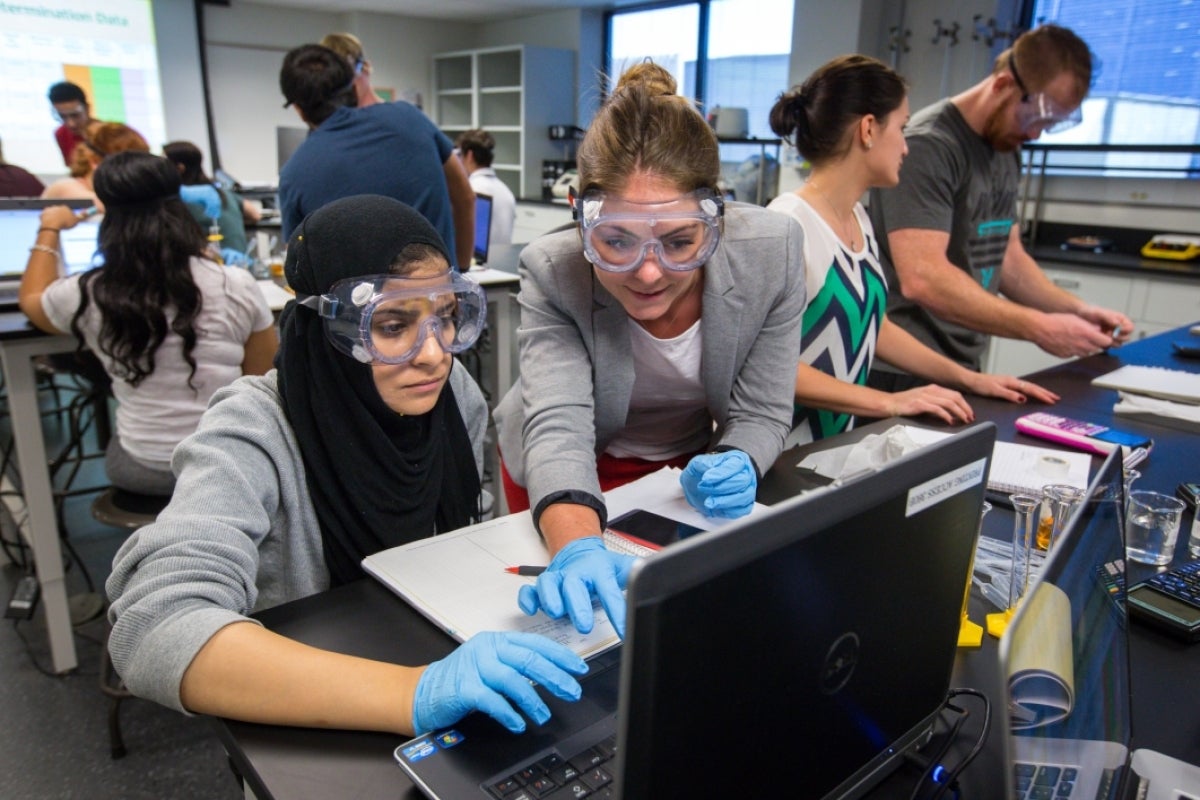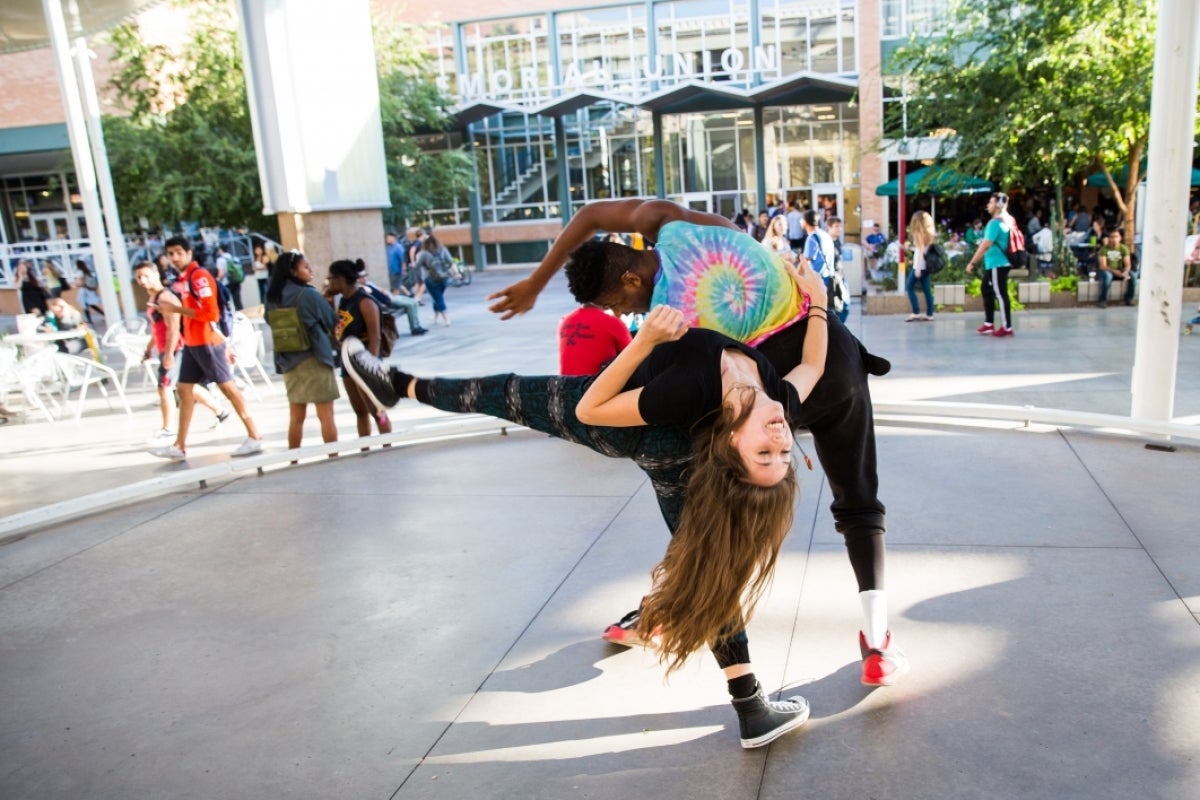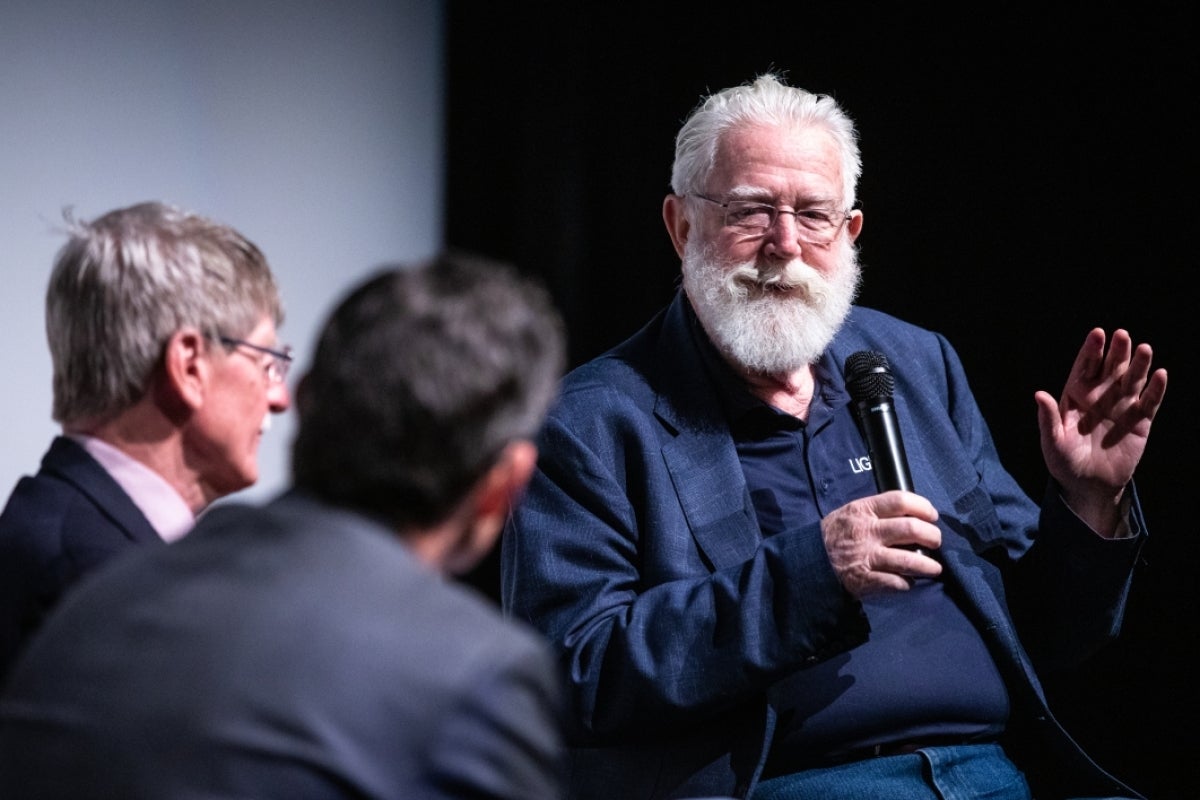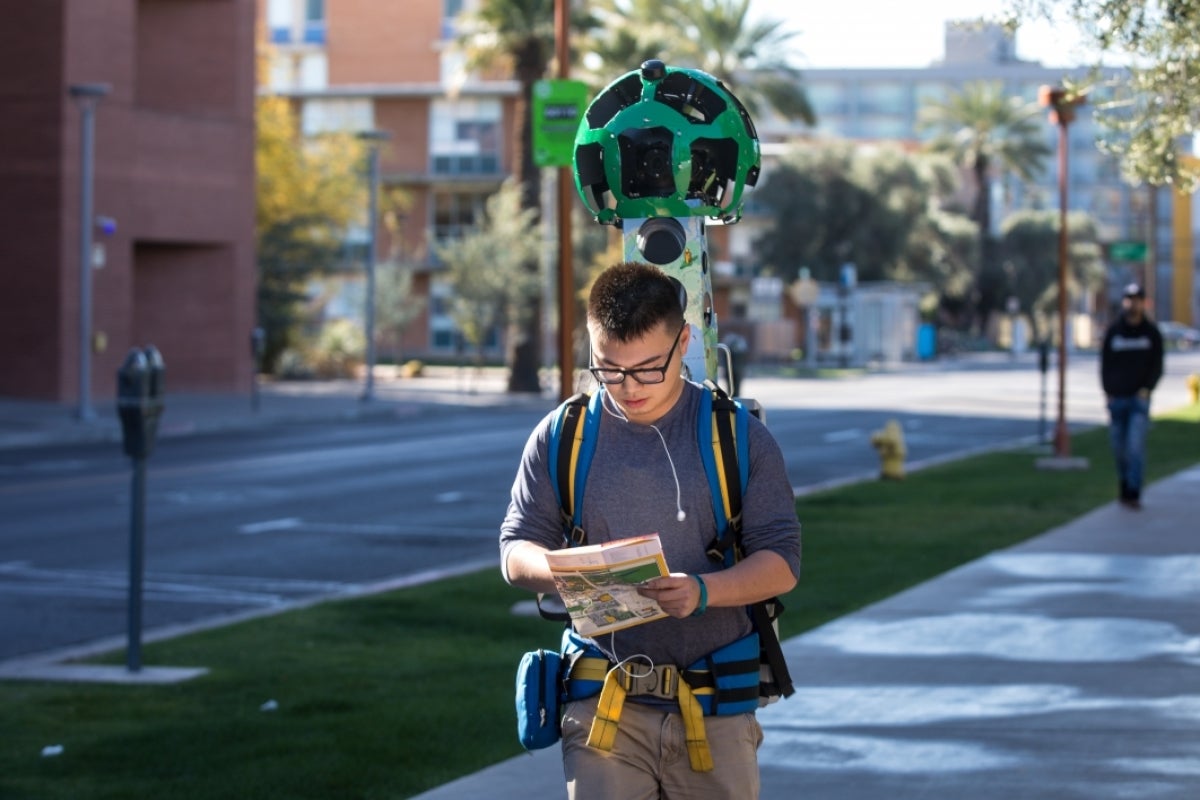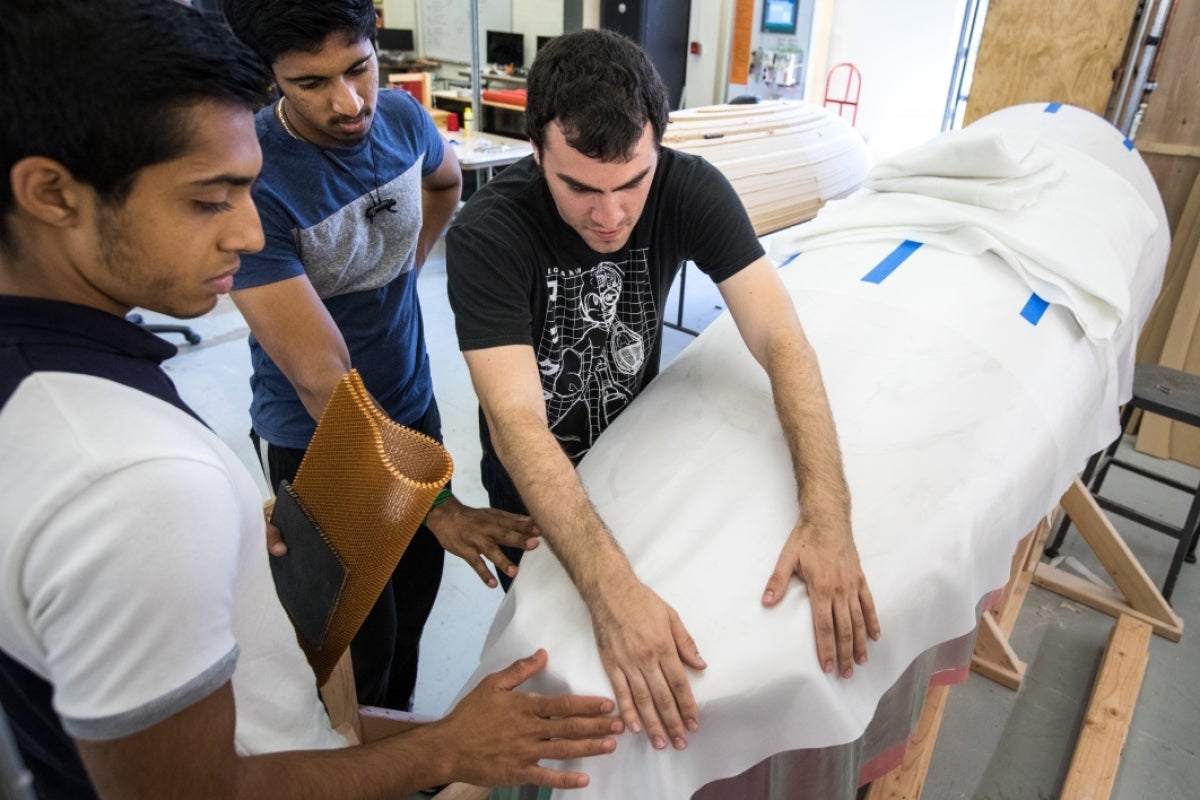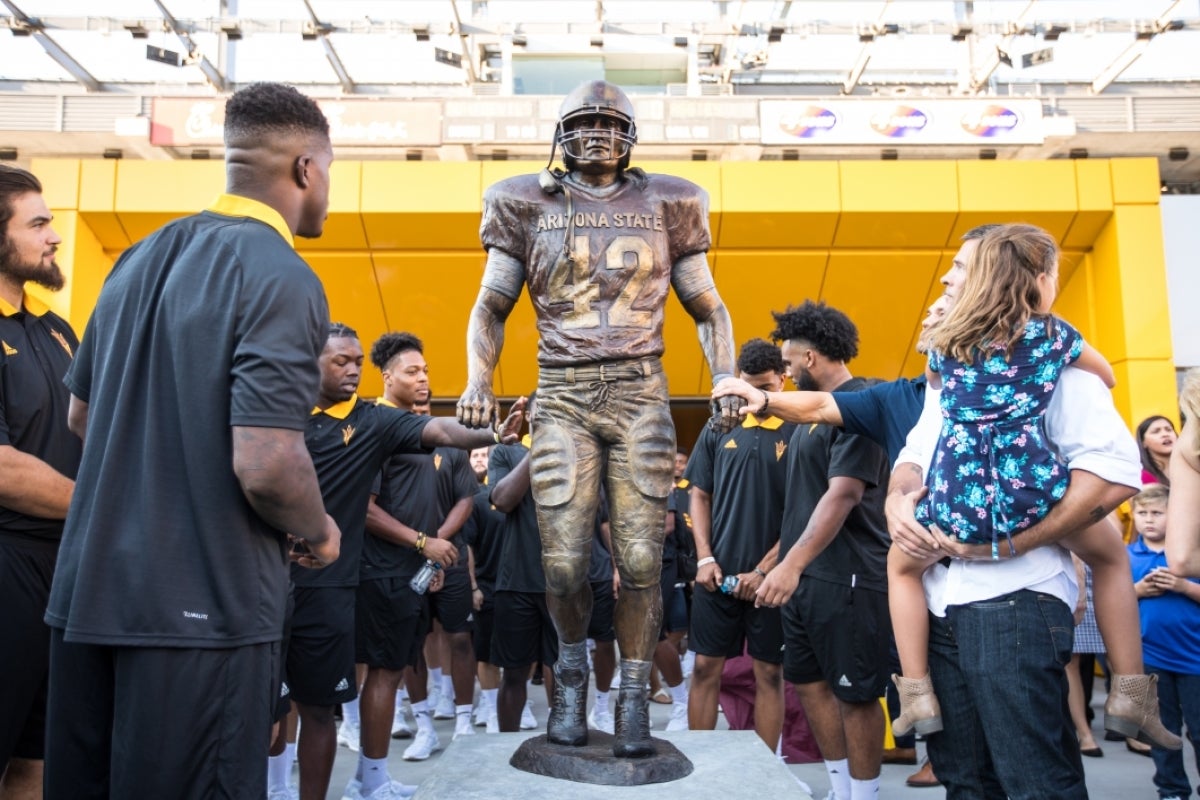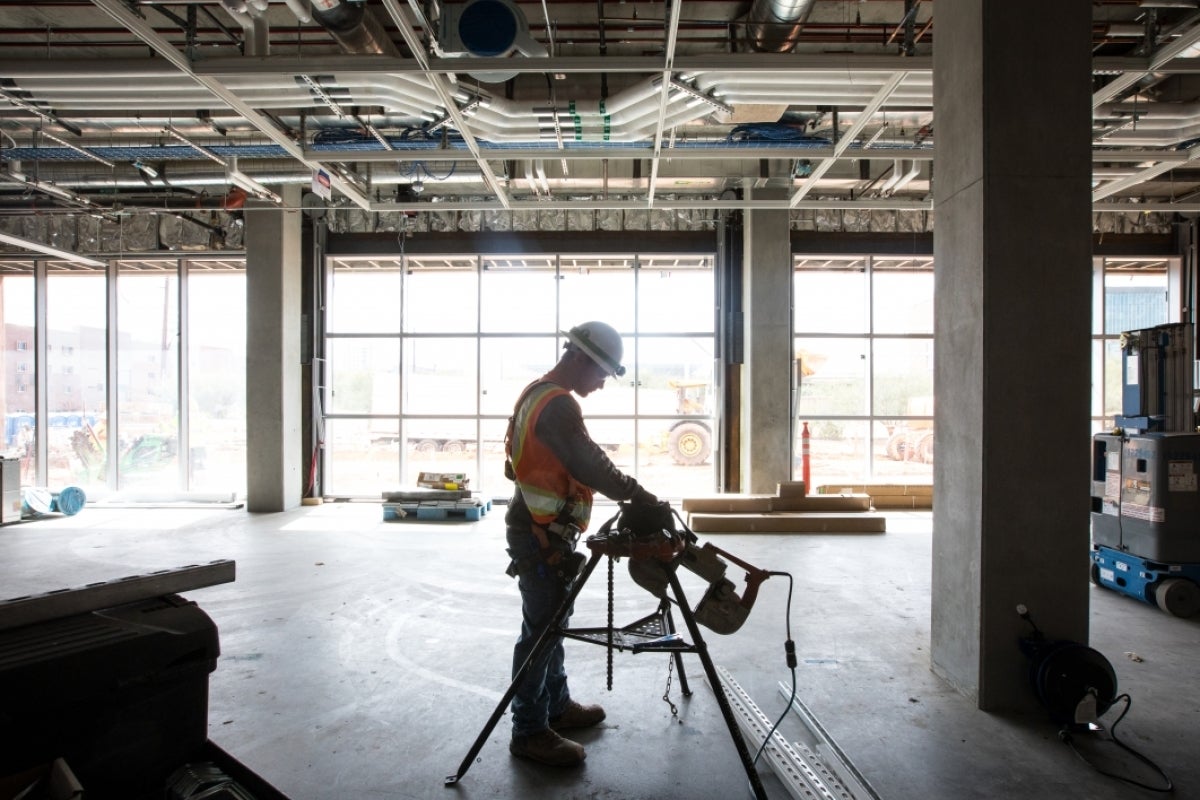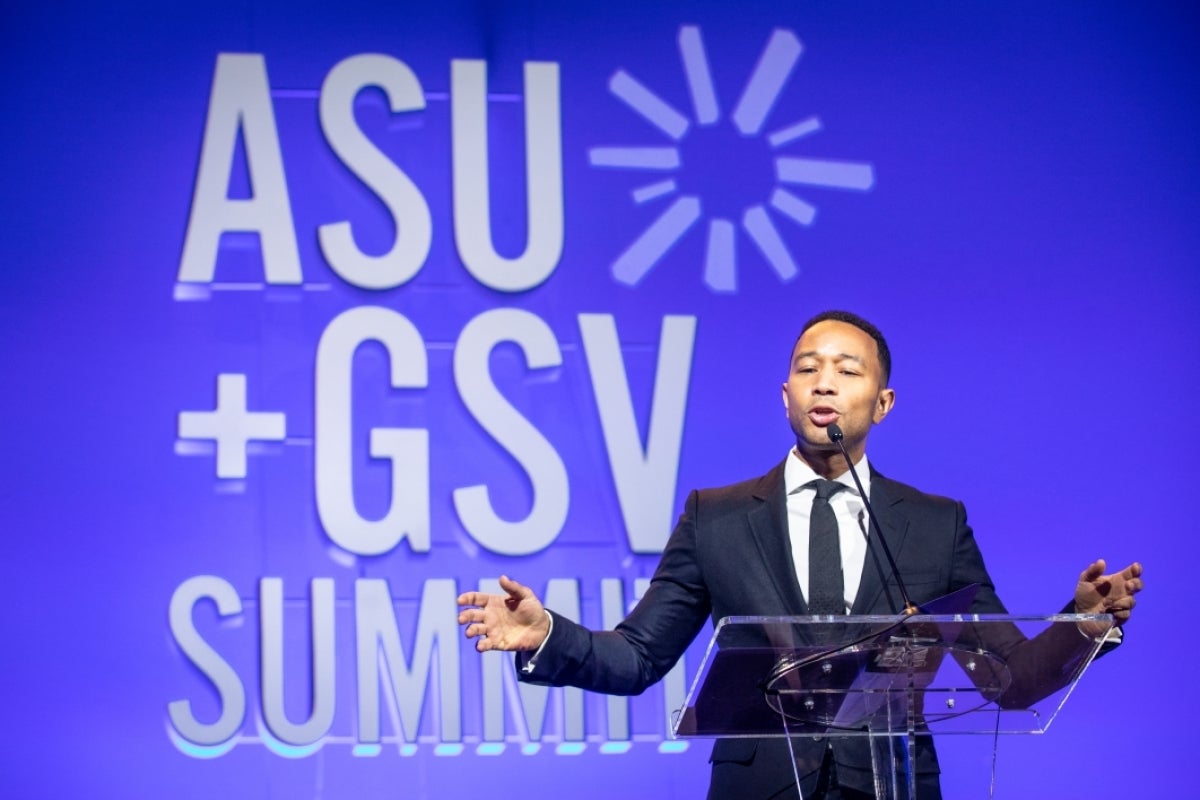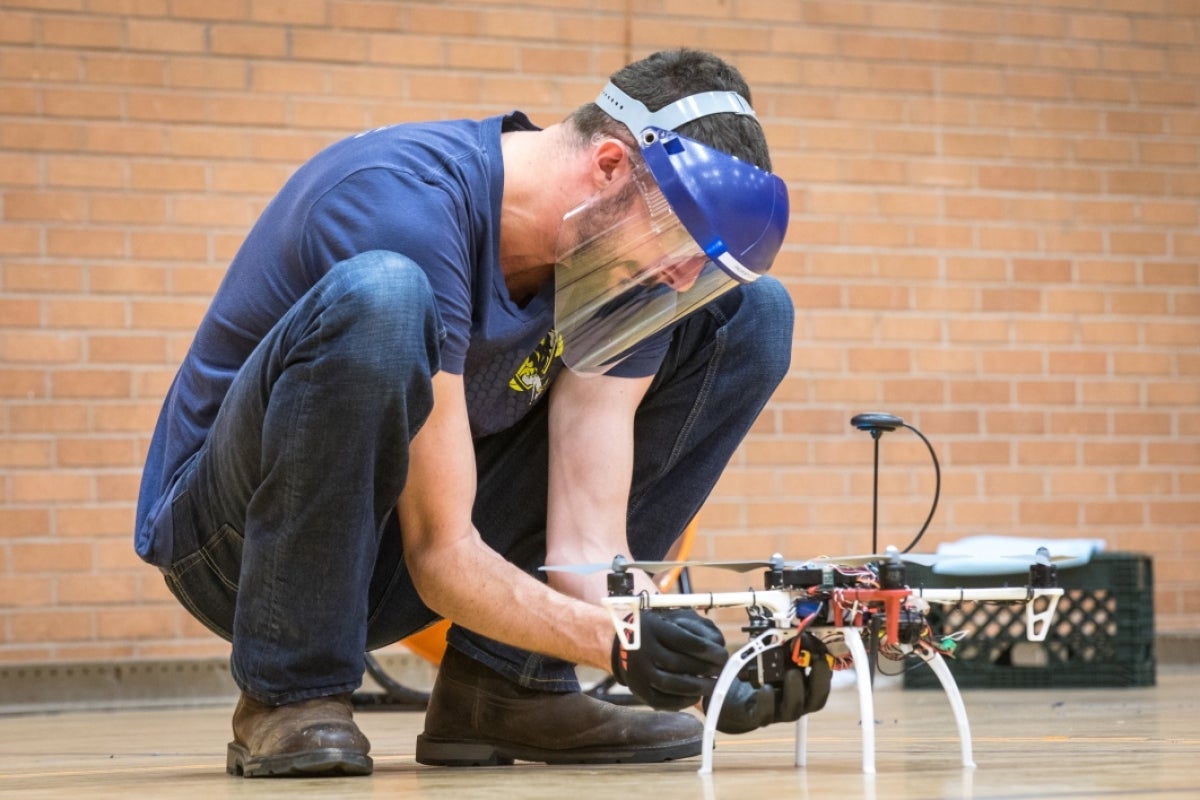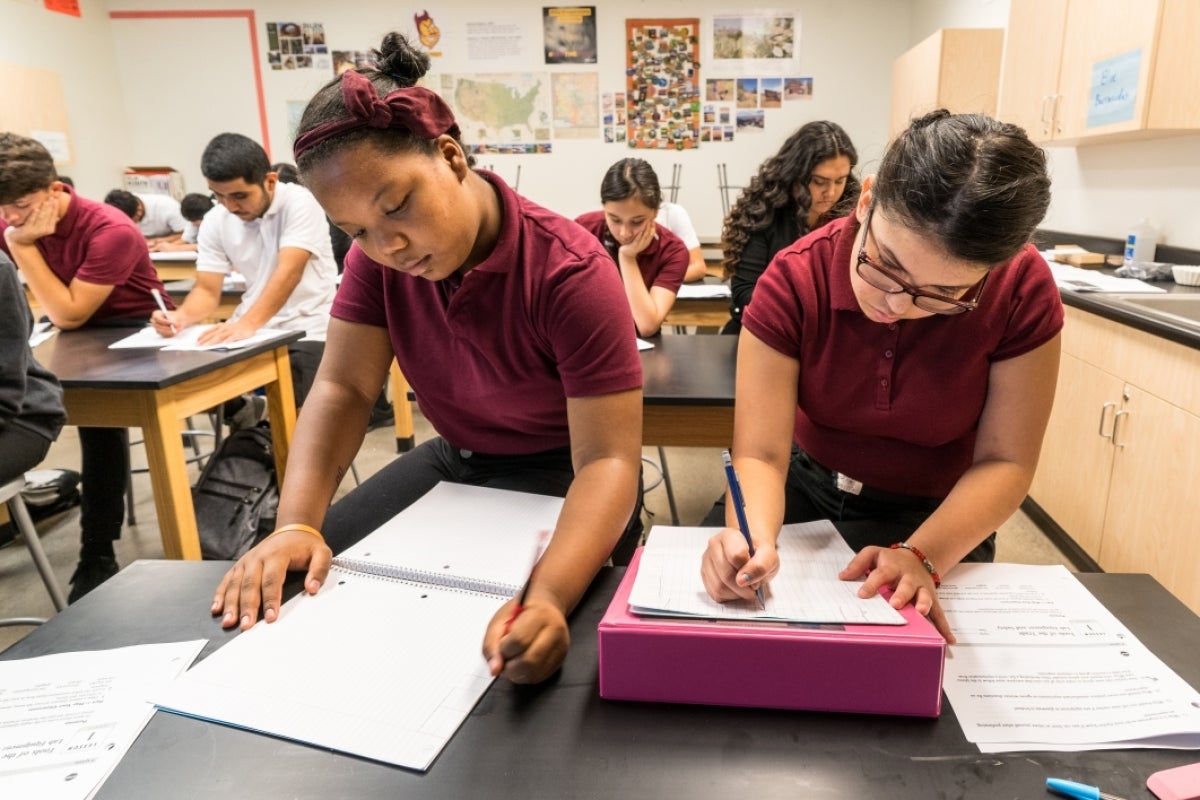As the new year approaches, it's time for a look back at some of the notable Arizona State stories of the past decade.
But first, two caveats.
- For the word wonks and math mavens who are still smarting about all the Y2K hullabaloo — yes, we know that technically the new decade begins in 2021, since there was never a Year Zero. As people who get in arguments about new hyphenation rules from the Associated Press, we totally get it. You are seen and acknowledged. But we're still doing this story now and not a year from now.
- This is but a snapshot of a few of the big stories of the past 10 years. It will not be exhaustive, and because ASU is such a big, creative community, we almost certainly missed a story near and dear to your heart. We invite you to shine a spotlight on other people and stories on social media with the tag #ASUDecadeInReview — before we jump into '20s, let's all take a moment to celebrate what we've accomplished.
And now, on to the flashbacks and some of our favorite photos.
2010
Eight/KAET-TV moved to the Downtown Phoenix campus after nearly 50 years on the Tempe one. And the first guest on "Horizon" in the new studio was noteworthy: Supreme Court Justice Sandra Day O'Connor. Her appearance was fitting, as "Horizon" was born out of coverage of O'Connor's confirmation hearings in 1981.
ASU established the School of Politics and Global Studies (which combined two units from the College of Liberal Arts and Sciences: the political science department and the School of Global Studies) and the School of Transborder Studies, the first of its kind in the nation. That year also marked the start of the Future Tense partnership between ASU and the New America Foundation, which aims at exploring emerging technologies and their effects on society and public policy.
Mary Lou Fulton Teachers College was awarded $43.4 million to help reform Arizona schools, and algae research got some big support from the state (two years later, ASU would be chosen to lead the first-ever national algae testbed). ASU archaeologists' findings pushed back the origins of stone-tool use by early humans by some 800,000 years, and a National Cancer Institute study supported Biodesign Institute researchers' pioneering work in cancer screening.
The ASU community lost two Sun Devil legends that year: football, basketball and baseball coach Bill Kajikawa (he started when the mascot was still the Bulldogs) and major athletics booster and alumnus Ed Carson (he and his wife are the names behind the Carson Student-Athlete Center).
2011
The Pat Tillman Veterans Center opened, offering resources and support for veterans and their families to make the transition from the military. (In related news, that year an ASU alumna, Maj. Gen. Maggie Woodward, was the first woman to lead a combat air campaign in U.S. history.)
President Barack Obama honored an ASU math program; the Walter Cronkite School of Journalism and Mass Communication's PR Lab was named one of the 10 "college classes that impact the outside world"; and an ASU microbiologist received NASA's most prestigious commendation for her contributions to science.
Project Humanities launched its inaugural year with a focus on "perspective on place." Its first event was a talk by writer and filmmaker Sherman Alexie that February. The Center for the Study of Race and Democracy opened at ASU, and sessions A and B — now a staple of our semesters — got their start. The Sun Devil softball team won the NCAA championship for the second time in four years, and wrestler Anthony Robles, who was born with one leg, won the NCAA title after a perfect season.
In sustainability news, ASU passed a U.S. higher-education solar milestone, and the former nursing building on the Tempe campus was renamed Wrigley Hall in honor of Julie Anne Wrigley, who had made a significant contribution to establish the institute seven years prior.
The Eagle has landed: A NASA moon rock went on public display (you can still visit it in the Lunar Reconnaissance Orbiter Camera gallery), and ASU President Michael Crow, who earned the rank of Eagle Scout as a teenager, received the Distinguished Eagle Scout Award.
2012
As the New American University turned 10, there were a number of beginnings worth noting, including the first class of MasterCard Foundation Scholars at ASU. The McCain Institute for International Leadership was established with the support of the McCain Institute Foundation. The multidisciplinary College of Health Solutions launched with the mission of improving health outcomes. And the Center for Science and the Imagination began its journey of exploring the social implications of cutting-edge research.
ASU installed its first electric vehicle charging stations, ISTB4 opened (its crater carpet in the third-floor atrium is our favorite ASU flooring) and both the West and Polytechnic campuses celebrated the opening of housing and dining buildings. The James Turrell art piece "Air Apparent" was unveiled in Tempe, and some spirited blossoms began appearing.
Night of the Open Door, now a major spring event across all Valley campuses, welcomed the community at its very first open house. The ASU-designed THEMIS camera celebrated a decade's discoveries on Mars. The literary magazine Hayden's Ferry Review marked 25 years and the Child Study Lab 40 years of research in child development.
Nutrition students opened the public Kitchen Cafe downtown. A student's app won the top prize at the Macworld trade show, while other students found a rather creative way to light a dog park.
The T. Denny Sanford School of Social and Family Dynamics was named for the entrepreneur in recognition of his longtime support. The university also received substantial investments from the Rob and Melani Walton Fund and the Virginia G. Piper Charitable Trust to accelerate sustainability efforts and improve health care, respectively. And the community mourned the loss of William Polk Carey, one of the nation’s most prominent real estate investors and the major donor behind the W. P. Carey School of Business at ASU.
Sun Devil baseball sent its 100th player to the major leagues, Jordan Bachnynski recorded the first triple-double in ASU basketball history, and 18 Sun Devils headed to London to compete for Olympic glory, two bringing hold gold medals.
2013
ASU brains continued to make discoveries: A College of Liberal Arts and Sciences faculty's groundbreaking research on protein structures made Science's top 10 breakthroughs of the year, and the Flexible Electronics and Display Center successfully manufactured the world’s largest flexible color organic light emitting display (OLED) prototype, measuring 14.7 diagonal inches. The university joined the National Academy of Inventors, helping faculty and student innovators bring their ideas into the marketplace.
ASU launched several new health programs, including the Obesity Solutions Initiative and the School for the Science of Health Care Delivery. Also a big step in health, the university went tobacco free as of Aug. 1 that year.
With its dramatic cutout circular skylight above one of its entrances, McCord Hall was dedicated, and the university established the Trustees of ASU.
The Future Sun Devil Families program — an initiative to help families prepare for college — saw its first graduates that spring, and the ASU Staff Council unveiled a new program called Staff Helping Staff that provides financial assistance to university employees experiencing hardship. (Employees can donate or apply for confidential assistance on the program's website.)
The Sparky mascot costume — which has been changed more than a dozen times since the character was introduced in 1946 — underwent its latest update in 2013. After an initial design was met with objections, community members were asked to vote, with the winning design (which should look familiar to current Sun Devils) unveiled that May.
2014
Starbucks and ASU brewed up the Starbucks College Achievement Plan, a first-of-its-kind program designed to open up learning opportunities for thousands of Starbucks partners. The program, which offers full tuition reimbursement to eligible partners enrolled in ASU Online, marked its fifth anniversary in fall 2019 with more than 3,000 people having earned their bachelor's degrees while working at Starbucks.
In other firsts that year, ASU at Lake Havasu graduated its first students, an ASU adviser was named the first female American Indian federal judge and the Walk-Only Zones took effect on the Tempe campus to enhance pedestrian safety.
And in one of the more unexpected stories, an unknown recording of a 1964 Martin Luther King Jr. speech at ASU was discovered at a Goodwill store and eventually made available to the public through the ASU Library Repository.
It was a good year for space, with NASA choosing ASU to design and operate a camera system for the Mars 2020 mission, asteroids named for two ASU faculty members and the university receiving a rare space rock.
The Thunderbird School of Global Management became part of ASU's Knowledge Enterprise. ASU Gammage celebrated 50 years, and Eight/Arizona PBS became part of the Cronkite School. The College of Technology and Innovation was renamed the Polytechnic School and merged into the Ira A. Fulton Schools of Engineering.
A number of initiatives and centers were launched, including the Center for Emergency Management and Homeland Security, the Public Insight Network at the Cronkite School and the Future of War project with New America. And Leo and Annette Beus continued their support to the university with a $10 million gift to the Sandra Day O'Connor School of Law's Center for Law and Society, a building that would open two years later.
2015
ASU began its "most innovative" run this year, with U.S. News and World Report naming the university to the top of its newest category. (And with excellent timing, the School for the Future of Innovation in Society got its start that same year.) Bus wraps and student memes would follow, as well as increased public interest into the university's work.
That work included the invention of the world's first white laser, recognized as one of the top 100 breakthroughs by Popular Science magazine, a breakthrough that will eventually produce computer and TV displays with 70% more colors. And at the other end of the history spectrum, the earliest evidence of our human genus — Homo — was found in Ethiopia by a team of ASU scientists and students. The fossil of a jawbone has been dated to 2.8 million years ago, predating the previously known fossils by about 400,000 years.
Fossils of a slightly different kind fascinated an arts student, who built a dinosaur skull that allowed people to re-create the beast's call. Other students impressed with the equivalent of a Pulitzer Prize for broadcast for their "Hooked" documentary, while still others set out to make a difference as ASU's first Pueblo Indian doctoral cohort graduated.
A New York Times columnist called Barrett, The Honors College the "gold standard" among honors colleges, and NASA gave the LunaH-Map CubeSat the go-ahead.
ASU President Michael Crow and his wife, Sybil Francis, committed $1.2 million to fund the directorship of the Public Service Academy, a then-new center created to educate purpose-driven leaders who intend to serve in nonprofits, the civil service and the military. And the W. P. Carey School of Business drew headlines for its Forward Focus MBA, a full-scholarship program aimed at helping people who desire to do good.
And the community lost one of its most generous supporters when the namesake of ASU's Teachers College, Mary Lou Fulton, died at the age of 82.
2016
ASU's second "most innovative" ranking joins a number of other accolades, such as the top U.S. producer of Fulbright scholars, top public research institution for international students, 38th worldwide in patents, and one of the top 100 most prestigious universities in the world.
ASU scientists revealed a low-cost, easily administered test for the Zika virus. Engineers figured out how to control robots with the brain and how to teach a robot to teach itself to shoot hoops. Researchers proved that the middle school years are hardest on moms and found that Uber eases traffic congestion. And when the sky fell, an ASU team worked with White Mountain Apaches to find meteorite fragments on tribal land.
Sun Devils made an impact around the world, from treating hearing loss in Malawi to looking into the deep past at the Teotihuacan Research Laboratory in Mexico to making a splash at the Rio Olympics. (Speaking of making a splash, Michael Phelps did just that while training at ASU.)
Meanwhile, Palm Walk turned 100 (and would see a new set of palm trees), Thunderbird turned 70 and the Polytechnic campus turned 20.
Downtown, the Beus Center for Law and Society opened, Grant Street Studios found new life as a creative hub and the Collaboratory on Central opened to give care and services to low-income residents. And across the Valley, ASU and Mayo Clinic formalized a partnership aimed at transforming medical education and health care in the U.S., helping doctors reduce costs, simplify the system and save more lives.
2017
Third time's the charm, as ASU was named most innovative a third straight time. The university also announced Campaign ASU 2020, a comprehensive campaign aiming to raise at least $1.5 billion to fuel discovery, champion student success and enrich the community.
Researchers continued to make headlines: ASU was chosen to lead a deep-space NASA mission for the first time with the Psyche Mission. A team found success with novel approach in treating autism with fecal microbial transplants. Scientists developed a rapid tuberculosis test and scored a major FDA victory with an antimicrobial ban. Sun Devils reduced stress in shelter dogs, won notice for a solar-powered digital library for off-grid communities and found their words on tour with U2.
U.S. Sen. John McCain and ASU teamed up to transform the Rio Salado riverbed. ASU and adidas partnered to shape the future of sport. And ASU Prep Digital launched to remove barriers to education and fill learning gaps at schools.
Students learned how to travel fast, live with very little water and find a solution to limited parking. Sun Devils flourished in Silicon Valley and explored health entrepreneurship with the new HEALab.
The School for Civic and Economic Thought and Leadership launched, and a number of new buildings opened, including Tooker House, an immersive residence hall for engineers; the Student Pavilion, a central hub for student activity; and a new sustainable home for the Herberger Young Scholars Academy on the West campus. ASU announced that Thunderbird would be moving downtown, and Mayo Clinic School of Medicine welcomed its first cohort of students in Scottsdale.
The ASU community mourned the loss of legendary football coach Frank Kush, transformative former ASU Provost Elizabeth Capaldi Phillips and ASU patron and philanthropist Gary K. Herberger. And the memory of a former Sun Devil lived on with the installation of the Pat Tillman statue at Sun Devil Stadium.
2018
For the fourth time in a row, ASU was named most innovative. The university also celebrated a banner year of students winning prestigious scholarships, as well as one of its poets being named the recipient of a MacArthur "genius" grant.
The university partnered with Uber on fully funded education (including undergraduate degrees and non-degree courses) for eligible drivers. ASU also partnered with the Los Angeles County Museum of Art to increase diversity in museum professionals.
Speaking of museums, the National WWII Museum in New Orleans collaborated with ASU to launch a new online master's in World War II studies. And a partnership between ASU Online, Labster and Google brought about a first: a virtual biology lab for online students.
In research, it was a year for canines: ASU researchers found the cute puppy formula, gathered data on shelter dog welfare and breeds and earned a grant to study a dog cancer vaccine (whose trial began in 2019). And Dutch joined the ASU Police Department as its first trauma dog.
Scientists programmed nanorobots to shrink tumors, scholars saved priceless manuscripts from obscurity and we all learned why we shouldn't be flushing contact lenses down the drain.
In our nation's capital, the Barrett & O'Connor Washington Center opened with a week of panels, workshops and other events. Back in the Phoenix area, Biodesign C opened its doors, upscale senior living facility Mirabella broke ground, the new Greek Leadership Village welcomed 950 residents and Hayden Library — which will reopen in just a few weeks — began to reimagine what a university library should be. Sun Devil Stadium began its role as a cultural hub as the ASU 365 Community Union kicked off with a series of concerts.
Giving remained a part of the university's fabric: Mike and Cindy Watts invested $30 million in the university, a gift that established the Watts College of Public Service and Community Solutions. And the family of a student whose life was cut short by cancer turned tragedy to triumph with a memorial scholarship.
2019
Which brings us to now. Our year-in-review roundup has top stories from this year — including, you guessed it, the top innovation ranking for a fifth year in a row.
We hope this look back has gotten you excited about what's ahead for the university as ASU launches into a new decade of educational excellence, exciting discoveries and community impact. Give 'em hell, Devils.
Lisa Robbins and Deanna Dent contributed to this article.
More Sun Devil community

Supporters show their generosity during Sun Devil Giving Day 2025
Thousands of Arizona State University supporters from across the globe came together on Sun Devil Giving Day on March 20 to give to scholarships, research, student programs and university initiatives…

New ASU women's basketball coach has sights set on championships
Molly Miller apologized for being a few minutes late for her Zoom interview Sunday afternoon.No apology was necessary.It’s been a crazy and hectic 72 hours for Miller, who guided Grand Canyon…
SolarSPELL wins 'best in show' award at South by Southwest
Arizona State University professors from a variety of disciplines made a big splash at the South by Southwest festival of technology and culture in Texas earlier this month.The ASU SolarSPELL…


